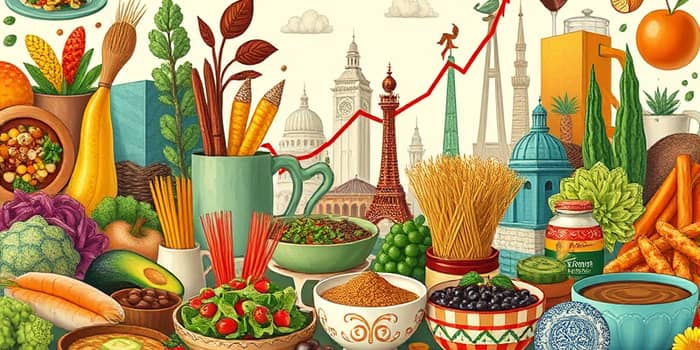
As consumer tastes evolve rapidly, the food and beverage sector is experiencing a renaissance, marked by robust share price gains and strategic market moves. From established giants to nimble newcomers, companies are benefitting from a blend of innovation, sustainability efforts, and shifting demographics. Investors seeking both growth and stability are turning their attention to an industry that marries everyday consumption with exciting financial potential.
The first half of 2025 has highlighted the resilience and dynamism of leading industry players. Starbucks (SBUX) and Chipotle Mexican Grill (CMG) continue to outperform, leveraging digital ordering, expanded menus and aggressive store growth. Meanwhile, Restaurant Brands International (QSR) and a host of smaller chains—Wingstop, Shake Shack, CAVA, Greggs and Kura Sushi USA—are capturing market share with focused expansion strategies.
Investors prize consistent global expansion and innovative loyalty programs, both of which have driven same-store sales higher and sustained optimistic analyst ratings. With Starbucks boasting over 37,222 outlets worldwide and Chipotle operating 3,300 locations, scale is being matched by agility in menu innovation and operational efficiency.
Below is a snapshot of headline numbers, underscoring market capitalizations and notable growth indicators across leading names.
Innovation-driven public offerings are reshaping the competitive landscape. In late 2024, BBB Foods debuted at $17.50 and surged to over $28, reflecting investor appetite for fast-growing, consumer-focused brands. Similarly, Australia’s Guzman y Gomez rocketed 37% on its debut and is now ambitiously entering the U.S. market.
These listings underscore a broader trend: the market’s hunger for better-for-you brands and international fast-casuals. Emerging IPOs in alternative proteins and tech-enabled food solutions signal that investors are placing bets on companies offering scientific differentiation and sustainability credentials.
Consumer preferences have shifted dramatically toward health, sustainability and convenience. Plant-based products, organic ingredients and eco-friendly packaging now command premium pricing. Companies like SunOpta, with its plant-based milks and organic broths, have not only beaten earnings estimates but also raised guidance after benefiting from an expanded sales pipeline and improved margins.
Research partnerships—such as those between Nestlé Health Science and academic institutions—are propelling breakthroughs in functional foods targeting aging and wellness. At the same time, fast-casual chains leverage mobile ordering, AI-driven personalization and ghost kitchens to meet rising expectations for speed and customization.
In a volatile market environment, major consumer staples remain a go-to for yield-focused investors. Coca-Cola (KO) offers a reliable 1.24% dividend yield, while PepsiCo (PEP) stands at 2.2%. Even smaller names like Campbell Soup (CPB) and Conagra (CAG) deliver yields of 2.96% and 5.43%, respectively.
These companies showcase yield stability and regular dividend increases, reinforcing their defensive appeal. Their extensive global distribution networks and iconic brands provide a cushion against economic headwinds, making them attractive long-term holdings when balanced against growth-oriented positions.
Artificial intelligence and machine learning are no longer buzzwords but critical tools in product development and supply chain optimization. From predictive analytics that forecast flavor trends to automated logistics platforms that reduce waste, legacy brands are investing heavily in digital transformation.
Ingredient discovery platforms powered by AI are accelerating the launch of innovative products, while real-time data on consumer behavior helps companies refine marketing strategies. This technological revolution is driving increased R&D productivity, allowing companies both large and small to bring differentiated offerings to market more rapidly.
Whether you’re a growth-oriented trader or a conservative income investor, the food and beverage space offers a range of opportunities. To navigate this dynamic sector, consider the following:
Regularly review quarterly updates for margin improvement initiatives and global same-store sales data. Keep an eye on regulatory developments at the FDA, as compliance leaders often gain a competitive edge in product launches.
The shifting preferences of today’s consumers are fueling a remarkable upswing in food and beverage stocks. From legacy giants sustaining dividends to agile newcomers reshaping menus with innovative ingredients, the sector presents a unique blend of stability and growth potential.
By understanding core trends—health, sustainability, convenience and digital transformation—investors can position their portfolios to capture the full spectrum of opportunities. As the industry continues to evolve, staying informed and adaptable will be key to navigating this flavorful market renaissance.
References













